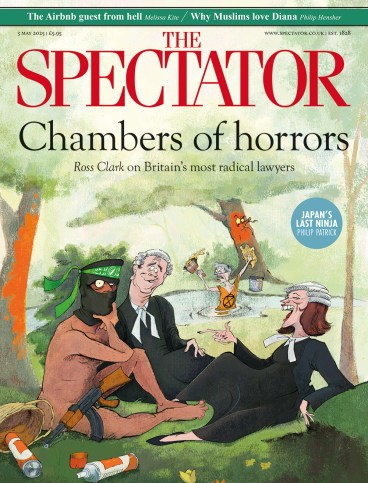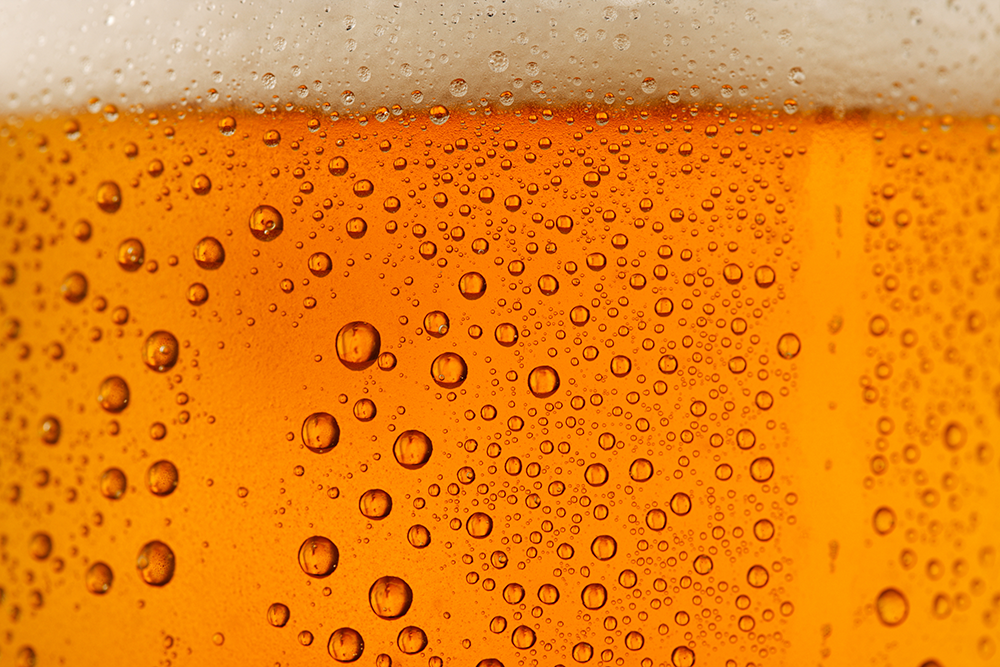
The recent announcement that the National Portrait Gallery has purchased two works by Sonia Boyce and Hew Locke for its collection came as something of a shock. The surprise? The art was actually good. Boyce’s quarterised collage ‘From Someone Else’s Fear Fantasy (A Case Of Mistaken Identity? Well This Is No Bed Of Roses) To Metamorphosis’ (1987), reminiscent of an enlarged and doodled upon set of passport photographs is a complex work of art made better the more attention you give it; Locke’s maximalist approach with the bust ‘Souvenir 17 (Albert Edward, Prince of Wales)’ (2024) may not be to everyone’s taste, but his sculpture is full of humour and pathos. Both artists are serious and rightly lauded, and though British audiences aren’t exactly bereft of opportunities to see what they get up to – well represented in the Tate and other public collections as they are – this may be a sign of optimism for the NPG under the new leadership of Victoria Siddall.
Know a celebrity? Get yourself in a government collection. Want your mug immortalised? Join the board
Before you all go rushing to Trafalgar Square however, be warned that the majority of the stuff that currently fills the museum is still complete dross. Previous missives from the press office, since the institution reopened after a refurbishment in 2023, have trumpeted a loan of a grimly kitsch portrait of Sam Smith, borrowed from the singer himself (imagine the ego behind hanging a scantily clad portrait of yourself dressed as an angel in your home); a sixth-form daub of civil-rights campaigner Peter Tatchell (at least the sitter this time is of some historic merit); and a partnership with Snapchat soliciting selfies. It seems extraordinary that the government forks out more than £10 million a year for this. To put it into perspective, since 2010, local councils have been forced to cut their library and culture spend by half and the British Council, which stages exhibitions globally and is vital for the country’s soft power, may have to sell off much of its vastly superior collection to service a debt to the government.
The National Portrait Gallery’s quality control came under scrutiny recently after it staged – under the leadership of Nicholas Cullinan, now director of the British Museum – an exhibition of work by photographer Zoë Law. A peculiar affair, the exhibition, titled Legends, featured moribund and not particularly enlightening portraits of some figures you might have heard of (Bobby Charlton, Lemn Sissay) and an awful lot of people likely to be less familiar to you – unless you were a connoisseur of Tatler (a fashion stylist, a society tai chi master, the sister of Blur frontman Damon Albarn). Included in the show was a portrait of Noel Gallagher, looking past his heyday, that has since been acquired for the collection. It was something that even the sitter seemed confused by. ‘The thought of [a] portrait of a grumpy middle-aged man who frankly hates having his picture taken being permanently displayed for future generations to marvel at is very special,’ Gallagher said. It has since been suggested that the impetus behind Law’s show was not a sudden curatorial appreciation for the former make-up artist-turned-photographer’s otherwise unremarkable career. Instead, until last year, the Guardian noted, she was married to Andrew Law, a hedge-fund manager, and together with their trust, the Law Family Charitable Foundation, the couple donated a substantial amount to the NPGs £41.3 million refurbishment. The institution’s ethics committee was consulted about the show and gave the green light.
A spokesman for the gallery defended the exhibition, saying that its primary concern was ‘the national and historical importance of the sitter’. Indeed, a check of the NPG’s mission statement concurs, noting the museum was established with the aim of collecting the portraits of ‘the most eminent persons in British history’. This is surely the reason behind the gallery commissioning a portrait of billionaire Carphone Warehouse founder and arts patron David Ross from Adam Broomberg and Oliver Chanarin in 2005; the fact that Ross joined the board a year later and has since risen to chair must be a coincidence. It might seem strange, and a little recognised fact, that the quality of the work is of only secondary importance in one of the country’s most prominent museums. Art has always had an element of nepotism, but this seems to be taking it to extremes: know a celebrity? Get yourself in a government collection. Want your mug immortalised? Join the board.
To get an idea of just how odd this state of affairs is, it is extraordinary that while a work by Sonia Boyce is only just entering the collection, the museum already owns two photographs of the artist. One was donated by the photographer Donald MacLellan in 1998, and another by Pogus Caesar in 2019. Hew Locke has faced the same strange ignominy: the institution bought a photograph by Nicholas Sinclair of the artist posing in front of his work in 2016, almost a decade before they decided to actually buy any of the work itself.
The majority of the stuff that currently fills the museum is still complete dross
A trip round the 19th-century galleries isn’t a completely miserable experience, once one learns how to navigate past the confused tourists earnestly reading the labels to find out who any of the sitters actually are. Invariably, the highest-quality art – the oldest portraits – is stuffed away on the top floor, some distance from where most people would have given up on the collection and sought out one of the various onsite cafés. A pensive Richard III, fiddling with a ring on his finger, hangs here, painted by an unknown artist in the late 16th century; nearby, Henry VIII sneers away in Hans Holbein the Younger’s 16th-century work; the strange, angular, full-length rendering of Katherine Parr, (c.1545) attributed to Master John, is a joy. Yet the visitor has to get through the contemporary galleries before they are allowed to appreciate these: rooms upon rooms of half-remembered celebrities and politicians, with a few ‘ordinary people’ thrown in for appearance’s sake. Sure, there’s some work by the likes of Richard Hamilton, Paula Rego and Eduardo Paolozzi, but most of the portraits prove as pedestrian as Law’s: one of the designer Paul Smith smug and spread-legged, by James Lloyd (who held the Paul Smith scholarship at Slade School of Art in the 1990s); one of a lounging, ageing Bobby Charlton that should be hung in the former footballer’s golf-club bar and nowhere else; a black and white photograph of that bloke from the band Placebo.
Neither are the curatorial decisions easy to decipher: the first official portrait painted of the Prince and Princess of Wales – a grimly photorealist affair by Jamie Coreth – is flanked by a painting by Susanne du Toit of the novelist Jeanette Winterson in her garden, and a pointless abstract painting by Doron Langberg of the actor Russell Tovey. A thickly applied oil of Ed Sheeran hangs beside a sub pop-art rendering of Vogue boss Anna Wintour. None of it makes sense. It’s as if some drunk had broken into Madame Tussauds and randomly rearranged everything – except Madame Tussauds would have long ago melted down half the irrelevant subjects depicted here. The National Portrait Gallery can’t do that of course, as the astute Gallagher hinted at: by law it can never deaccession any of its collection. These pictures of Tovey and Sheeran are with us for ever; celebrity might be fickle, but bad art, it seems, is timeless.







Comments